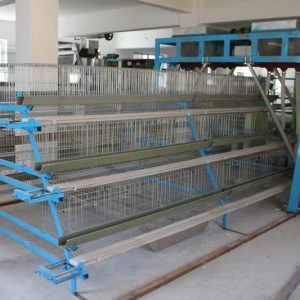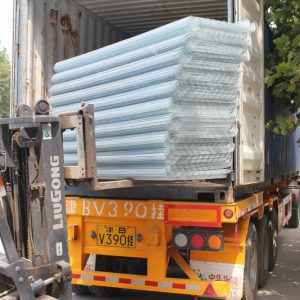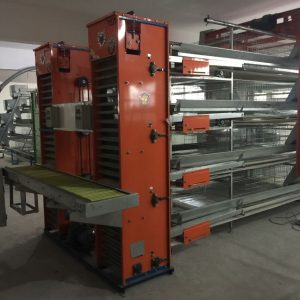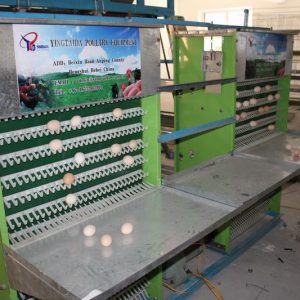
Calcium supplementation method for high-yield layers
Calcium plays an important role in the normal physiological function of chickens, the development of bones, stable production, and high yield. There are many problems in calcium supplementation, especially calcium supplementation in the preterm period.
1. Addition of calcium in the brooding period: Due to the development of laying hens to be smaller, the shorter brooding time of 0-8 weeks is not suitable for the development of new breeds of modern laying hens. In order to give full play to the genetic performance of laying hens, we break the calendar to raise chickens The length of the tibia reaches 86 mm, and the weight reaches the corresponding age standard as the standard for the end of brooding (tibia and weight reach the standard).
In this way, the time of using 0.9-1% calcium in the brooding period was extended from 8 weeks to about 10 weeks of “tibia and weight” double compliance (the actual tibia and weight development are mainly used, and the time is for reference only). During this period, for the use of 4%-5% premix, no additional stone powder, etc., but in order to promote the grinding, digestion and muscle and stomach development of chick feed, it is recommended to start at 15 days old and set at least 3 times a week Coarse quartz sand and gravel can be added to the feed tray, or 2-3/‰ coarse quartz sand and gravel can also be added directly.
The time to add the gravel is after the tibia and weight reach the standard, and then add 0.3%-0.5% of medium-sized granular stone powder to replace its function. For users who use self-ingredients or use a small proportion of core materials, use fish meal-free diets and add 1.5% dicalcium phosphate during tibia and body weight double compliance. Add 1% or so in diameter 1.3-2 mm granular stone powder. (The particles are about the size of northern small yellow rice, and the size should be easy to beak and peck). Add a certain amount of fish meal, you can reduce the addition of calcium hydrogen phosphate, etc. as appropriate.
2. Calcium addition during the growing period: the calcium content of the full-price feed in the growing period is preferably about 0.8%. Since the 4%-5% premix together with corn, soybean meal and other raw materials contains about 0.7% calcium, so After the tibia and weight have reached the standard-2 weeks before sexual maturity, for those using 4-5% incubation premix, you can add 0.3%-0.5% of larger particles of stone powder (remove the added coarse gravel, the particles are 2 -2.5 mm is appropriate, which is half a soybean grain size). For the self-provisioning of the core material, not less than 1% of calcium hydrogen phosphate, 100 kg of full-price feed, phytase 5000 6-7 grams, 1.3-1.5% granular stone powder.
Third, the addition of calcium in the pre-term period: due to the short period of the pre-term period, only about 2 weeks; plus the farmers are afraid of wet manure diarrhea; and the period of adding the pre-term period calcium is not easy to grasp and other reasons. Most farmers gradually add stone powder according to the growth rate of eggs after they start production.
Direct consequences of this approach:
First, the egg production rate rises slowly, low calcium diets inhibit the activity of poultry hypothalamus, and gonadotropin secretion decreases, causing the egg production to rise slowly or even decrease. Not only that, due to normal feeding, it is also easy to cause excess nutrients to be converted into fat, causing fatty liver; second, it is prone to fatigue syndrome paralysis chickens, especially for premature backup chickens, use feed containing calcium within 1% The stored bone marrow calcium is only enough for the production of 2-3 eggs. Such a chicken will quickly suspend production or discontinuously lay eggs. The peak rises slowly. Relying on the sacrifice of bone density to supply calcium for a long time will cause calcium deficiency to Lameness and fatal syndrome of laying hens.
It is very necessary to use a feed with a calcium content of about 2.25% in the pre-production period of about 2 weeks. You don’t have to worry about kidney disease or wet diarrhea, because there is evidence that as long as the diet of the backup hens and chickens is not provided before 6-8 weeks, the kidney structure will not be seen. The side effects of the change; as long as the bred chickens reasonably control the bran within 12%, and add stone powder to pay attention to the transition, the problem of wet manure diarrhea is not big.
Strictly speaking, the pre-production feed is used during the laying period of about 5% during the pre-production period of sexual maturity. Due to the large differences in feeding levels, the specific timing of production is not easy to predict. Therefore, the best method is based on the secondary sexual characteristics of the chicken, especially the development of the cock comb as a sign of switching from a low-calcium diet to a 2.25% calcium diet.
is about 15-17 weeks, the time is for reference only. At this stage, 4%-4.5% of stone powder is added for those who use 4%-5% of the premix in the growing period or the laying period (when the body weight reaches 18 weeks of standard weight and change to the laying period). Stone powder particles with a diameter greater than 5 mm and no less than 60%-70%. Of course, in 90-100 days, the stone powder should be gradually increased for transition. For those using a small proportion of self-made feed, it is best to add not less than 1% calcium hydrogen phosphate, 100 kg of full-price feed with phytase 5000 6-7 grams, and not less than 5.5% stone powder.
Fourth, the management of calcium in the laying period: strictly speaking, laying hens need to consume 3.8-4.2 grams of calcium per egg (calcium intake should not exceed 4.5 grams per day. Only, not more than 4%). Calcium addition% = egg production rate% / feed intake (g) × 0.22. For example, for chickens with an intake of 115 grams and a 93% egg production rate, the calcium content of the feed in spring and autumn is: 93%/115×0.22=3.68%. Due to the difference in season and intake, egg production rate, and age, The need for calcium is itself a variable.
Generally speaking, it is sufficient to use a feed containing about 3.5% calcium from 5% egg production to 280 days. For those using premix, it is feasible to add stone powder according to the recommended formula in spring and autumn (4%, 5% of premix is about 8%, 2% premix is about 9%. For 7%, it is recommended to add Note that the premix contains more stone powder); it is recommended to reduce the stone powder by 1-0.5% in winter due to the increase in feed intake; and increase the stone powder by 1-1.5% in summer.



